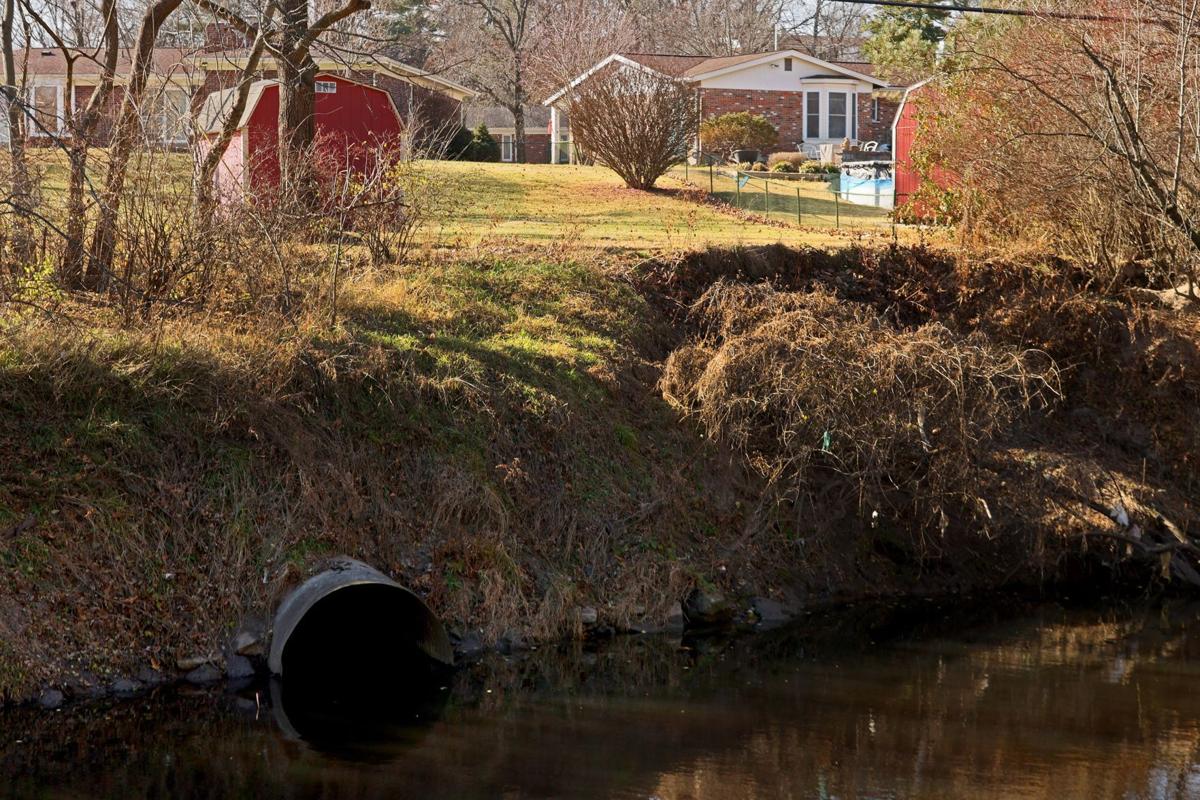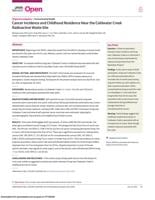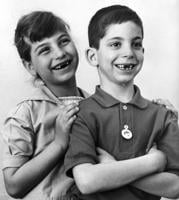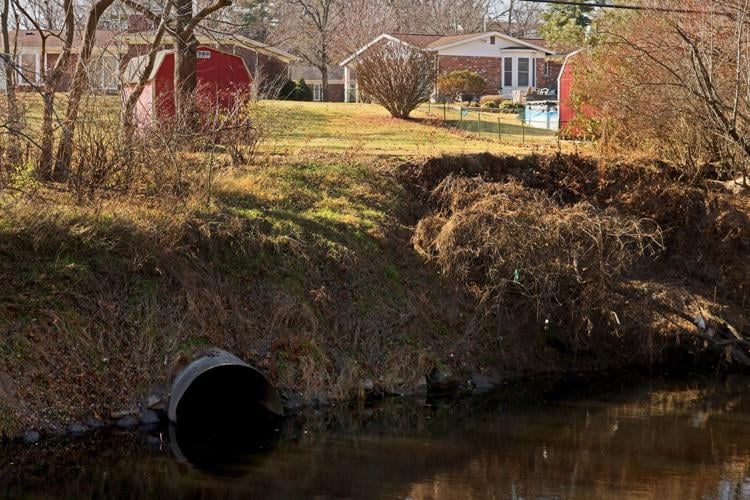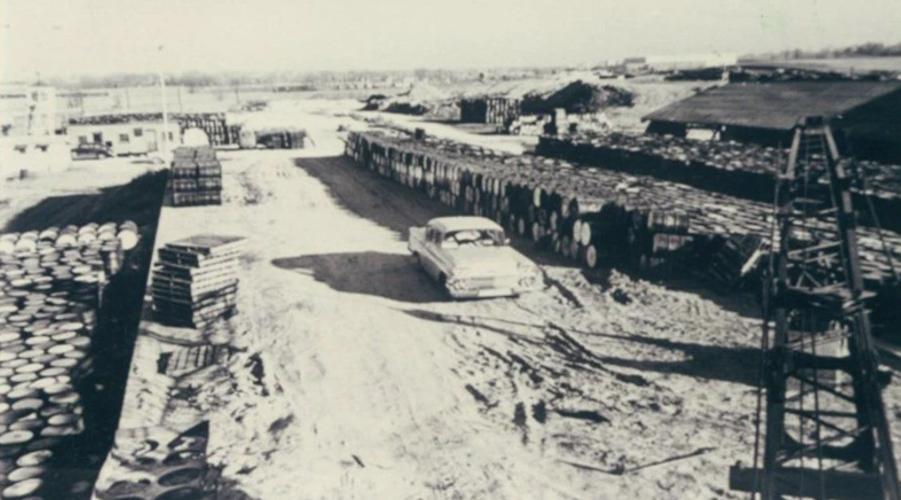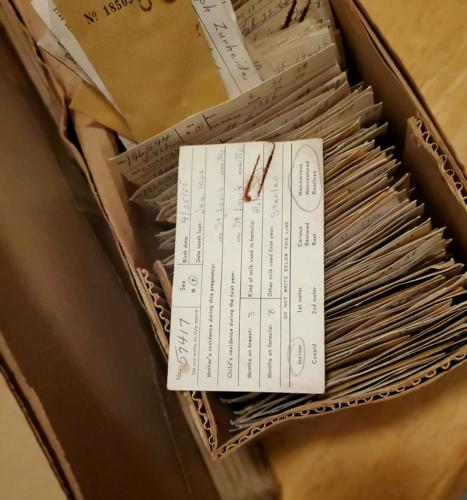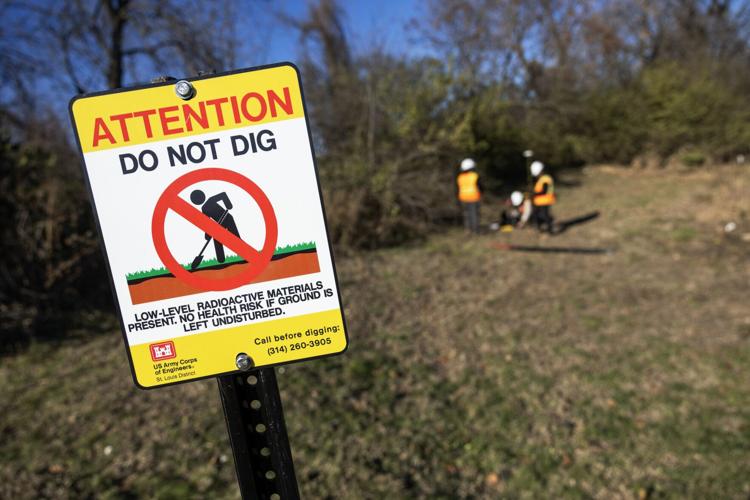
A sign warns people not to dig because of radioactive materials in the sediment, as contractors with the Army Corps of Engineers work on installing another sign on Thursday, Dec. 5, 2024, behind Hazelwood Civic Center East in Hazelwood.
ST. LOUIS COUNTY ŌĆö A new study by Harvard University researchers provides fresh evidence to support the health concerns of many people raised in north ├█č┐┤½├Į County: Children who lived near Coldwater Creek, which was contaminated by radioactive waste, faced an increased risk of cancer as they grew up.
The paper from researchers at the Harvard T.H. Chan School of Public Health, , gathered self-reported cancer diagnoses from 4,209 people who lived in the ├█č┐┤½├Į area as children in the 1950s and ŌĆÖ60s ŌĆö when radioactive contamination in the area was thought to be at its highest.
The studyŌĆÖs authors found a higher incidence of cancers from those living within 1 kilometer (about six-tenths of a mile) from Coldwater Creek, and that the rate of cancers went down as the distance from the creek grew.
People are also reading…
In addition, researchers found that cancers most likely to be caused by radiation ŌĆö such as thyroid, breast and leukemia ŌĆö were higher the closer people lived to the creek as children.
ŌĆ£At this point, what looks very strong is that living close to the creek increased your risk for cancer,ŌĆØ said Marc Weisskopf, a professor of environmental epidemiology in HarvardŌĆÖs Chan School and a lead author on the study. ŌĆ£It did it more so for radiosensitive cancer. So we suspect itŌĆÖs radiation related.ŌĆØ
The study is one of the strongest scientific indicators yet that low-level radioactive contamination in the waste left behind from uranium refining performed by Mallinckrodt Chemical Works in ├█č┐┤½├Į for the Manhattan Project has increased cancer risk for those living near Coldwater Creek, a Missouri River tributary that stretches 19 miles from a spring-fed lake in Overland north to the border of Fort Belle Fontaine County Park.
For years, residents have informally shared stories of the cancer and other disease diagnoses, suspecting it was related to their time swimming and playing near the creek. The waterway was contaminated by leftover uranium processing waste stored near where the creek runs past ├█č┐┤½├Į Lambert International Airport, and that contamination was likely spread during floods into nearby soil just as it was being moved for the development of adjacent postwar suburbs.
But past assessments, including a 2018 study from the federal Agency for Toxic Substances and Disease Registry, have found only a slightly higher risk of cancer in the area. Weisskopf said his teamŌĆÖs survey results indicate cancers were ŌĆ£many fold higher in terms of the numbers of excess casesŌĆØ than the ATSDR report.
The U.S. Army Corps of Engineers has been remediating contaminated soil along the banks of Coldwater Creek for years. And while the Corps says many of the levels there now are low, they have said they were likely far higher in the mid-20th century when waste stored along the creek at the airport and another site was leaching into the waterway.

In 1946, the Manhattan Engineer District acquired the 21.7-acre tract of land now known as the ├█č┐┤½├Į Airport Site (SLAPS) to store residues from uranium processing at the Mallinckrodt facility in ├█č┐┤½├Į.
The study comes on the heels of a major victory for area residents who have worked for years to raise awareness about the potential link between cancers and the regionŌĆÖs legacy of uranium processing in the early days of the nuclear age. A large swath of North County ŌĆö along with the industrial north ├█č┐┤½├Į riverfront and part of St. Charles County ŌĆö is included in the Radiation Exposure Compensation Act that was added into the ŌĆ£One Big Beautiful BillŌĆØ signed by President Donald Trump on July 4.
ŌĆ£All those years ago when we first started doing this, everybody thought we were crazy,ŌĆØ said Kim Visintine, who has spent years raising awareness about Coldwater CreekŌĆÖs contamination and potential link to cancer diagnoses for those who grew up near it. ŌĆ£ItŌĆÖs very validating, but at the same time itŌĆÖs kind of sad because it means that everything we thought was true.ŌĆØ
What baby teeth revealed
The study, published in the Journal of the American Medical Association, used data from 4,209 people who participated in the ├█č┐┤½├Į Baby ToothŌĆōLater Life Health Study. That study collected over 300,000 baby teeth from area children between 1958 and 1970 to measure radioactive fallout from atmospheric nuclear weapons tests in the early years of the Cold War. The studyŌĆÖs findings ŌĆö that radioactive isotopes in the teeth were higher in children born at the height of nuclear testing ŌĆö helped lead to the 1963 nuclear test ban treaty.
In 2001, the leftover baby teeth from the Washington University-led research were discovered in an old ammunition bunker at the universityŌĆÖs Tyson Research Center. They were donated to a small nonprofit, the , which began collaborating with Weisskopf on studies using the teeth to look at heavy metal exposure and other research.

A January 2021 photo shows records concerning 100,000-plus baby teeth, which are kept in small envelopes with information about the tooth and the tooth donor, which are stored in N.J.
But Weisskopf ŌĆö whose grandfather was a lead scientist on the Manhattan Project and later a nuclear arms control advocate ŌĆö said he kept hearing about Coldwater Creek from the people who donated their teeth. The trove of teeth included information on where the donors lived as children, so he and fellow researchers began asking them whether they had cancer.
The results indicate those living more than 20 kilometers away from the creek as children would have a 24% risk of cancer. The incidences of all cancers increased as the proximity narrowed, to 25% for those between 5 and 20 kilometers from Coldwater Creek, 28% for those between 1 and 5 kilometers from the creek and 30% for those who lived less than a kilometer away. Of the 139 people found from the baby tooth survey who lived less than a kilometer from the creek as children, some 25% reported cancers thought to be associated with radiation, compared to just 15% of the 1,375 people who lived more than 20 kilometers away.
The results suggest an additional 700 cancers for every 10,000 people living within 1 kilometer of Coldwater Creek, or a 29% increase in risk for any type of cancer. Those between 1 and 5 kilometers could have 450 more cases per 10,000 population, or a 19% increase in cancer risk, and those between 5 and 20 kilometers about 90 more cases per 10,000 people, or a 4% increase in cancer risk.
The use of the residential information from the baby tooth study allowed the Harvard researchers to connect potential exposure in childhood, something more recent government studies have been unable to do.
ŌĆ£For most exposures, environmental toxicants, childhood is a particularly vulnerable period, so it wouldnŌĆÖt surprise me at all if childhood exposure to these things had a wider impact than adult exposure,ŌĆØ Weisskopf said.
Study limitations
There are limitations to the study. The cancer data is self-reported, so Weisskopf said his team would like to be able to verify the cancer diagnoses with medical records. They would also like to measure actual radiation levels in the teeth to determine individual exposure. And there could be other chemicals from aircraft manufacturing and heavy industry that contaminated the creek and increased cancer risk, though Weisskopf said the prevalence of ŌĆ£radiosensitive cancersŌĆØ is a strong signal for radiological contamination.
HeŌĆÖs hoping to do further study, but since the Trump administration has slashed grant funding from the National Institutes of Health and targeted Harvard specifically, Weisskopf is currently on the hunt for funding for such research. The initial survey shows something is there, Weisskopf said.
ŌĆ£ItŌĆÖs enough of a red flag that I would want to do more intense work on it,ŌĆØ he said. ŌĆ£Because it certainly looks like somethingŌĆÖs going on and it shouldnŌĆÖt be ignored.ŌĆØ
The U.S. Army Corps of Engineers continues cleanup along Coldwater Creek, hauling truckloads of dirt with traces of radioactive waste from along the bank. Video by Allie Schallert, aschallert@post-dispatch.com







